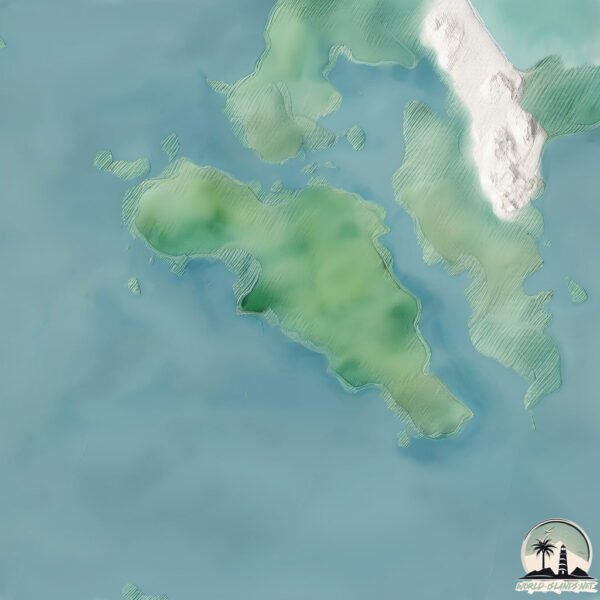Hòn Lớn

Welcome to Hòn Lớn, a Tropical island in the South China Sea, part of the majestic Pacific Ocean. This guide offers a comprehensive overview of what makes Hòn Lớn unique – from its geography and climate to its population, infrastructure, and beyond. Dive into the details:
- Geography and Size: Explore the island’s size and location.
- Climate and Weather: Weather patterns and temperature.
- Topography and Nature: Uncover the natural wonders of the island.
- Infrastructure and Travelling: Insights on reaching, staying, and making the most of your visit.
- News and Headlines: Latest News.
Geography and size of Hòn Lớn
Size: 49.5 km²
Coastline: 42.7 km
Ocean: Pacific Ocean
Sea: South China Sea
Continent: Asia
Hòn Lớn is a Medium Island spanning 49 km² with a coastline of 43 km.
Archipel: –
Tectonic Plate: Sunda – Extends across Southeast Asia, encompassing parts of the Sunda Shelf, known for its interaction with the Australian Plate, contributing to volcanic activity in Indonesia.
The geographic heart of the island is pinpointed at these coordinates:
Latitude: 12.6009822 / Longitude: 109.36011033
Climate and weather of Hòn Lớn
Climate Zone: Tropical
Climate Details: Tropical Savanna, Wet
Temperature: Hot
Climate Characteristics: Defined by distinct wet and dry seasons with high temperatures year-round. Pronounced rainfall occurs during the wet season, while the dry season is marked by drought.
Topography and nature of Hòn Lớn
Timezone: UTC+07:00
Timezone places: Asia/Jakarta
Max. Elevation: 461 m
Mean Elevation: 153 m
Vegetation: Evergreen Broadleaf Forest
Tree Coverage: 78%
The mean elevation is 153 m. The highest elevation on the island reaches approximately 461 meters above sea level. The island is characterized by Hills: Gently sloping landforms with rounded tops, having a maximum elevation between 200 and 500 meters. Hills contribute to a varied landscape on islands.
Dominating Vegetation: Evergreen Broadleaf Forest
Characterized by dense, lush canopies of broadleaf trees that retain their leaves year-round. These forests are typically found in tropical and subtropical regions and are known for their high biodiversity. Hòn Lớn has a tree cover of 78 %.
Vegetation: 9 vegetation zones – Very Highly Diverse Island
Islands in this range are ecological powerhouses, showcasing a wide array of vegetation zones. Each zone, from lush rainforests to arid scrublands, coastal mangroves to mountainous regions, contributes to a complex and interdependent ecosystem. These islands are often hotspots of biodiversity, supporting numerous species and intricate ecological processes.
Infrastructure and Travelling to Hòn Lớn
Does the island have a public airport? no.
There is no public and scheduled airport on Hòn Lớn. The nearest airport is Dong Tac Airport, located 46 km away.
Does the island have a major port? no.
There are no major ports on Hòn Lớn. The closest major port is NHA TRANG, approximately 38 km away.
The mean population of Hòn Lớn is 260 per km². Hòn Lớn is Moderately Inhabited. The island belongs to Vietnam.
Continuing your journey, Hòn Tre is the next notable island, situated merely km away.
HÒN LỚN – BÃI CÂY MẾN 2025: đi NAM DU có gì khác HÒN SƠN? | Giang Biển Đảo



Vietnam is classified as Emerging region: G20: Group of Twenty – Major economies comprising both developed and emerging countries, representing the world’s largest economies. The level of income is Lower middle income.
News – Latest Updates and Headlines from Hòn Lớn
Stay informed with the most recent news and important headlines from Hòn Lớn. Here’s a roundup of the latest developments.
Please note: The data used here has been primarily extracted from satellite readings. Deviations from exact values may occur, particularly regarding the height of elevations and population density. Land area and coastline measurements refer to average values at mean high tide.
